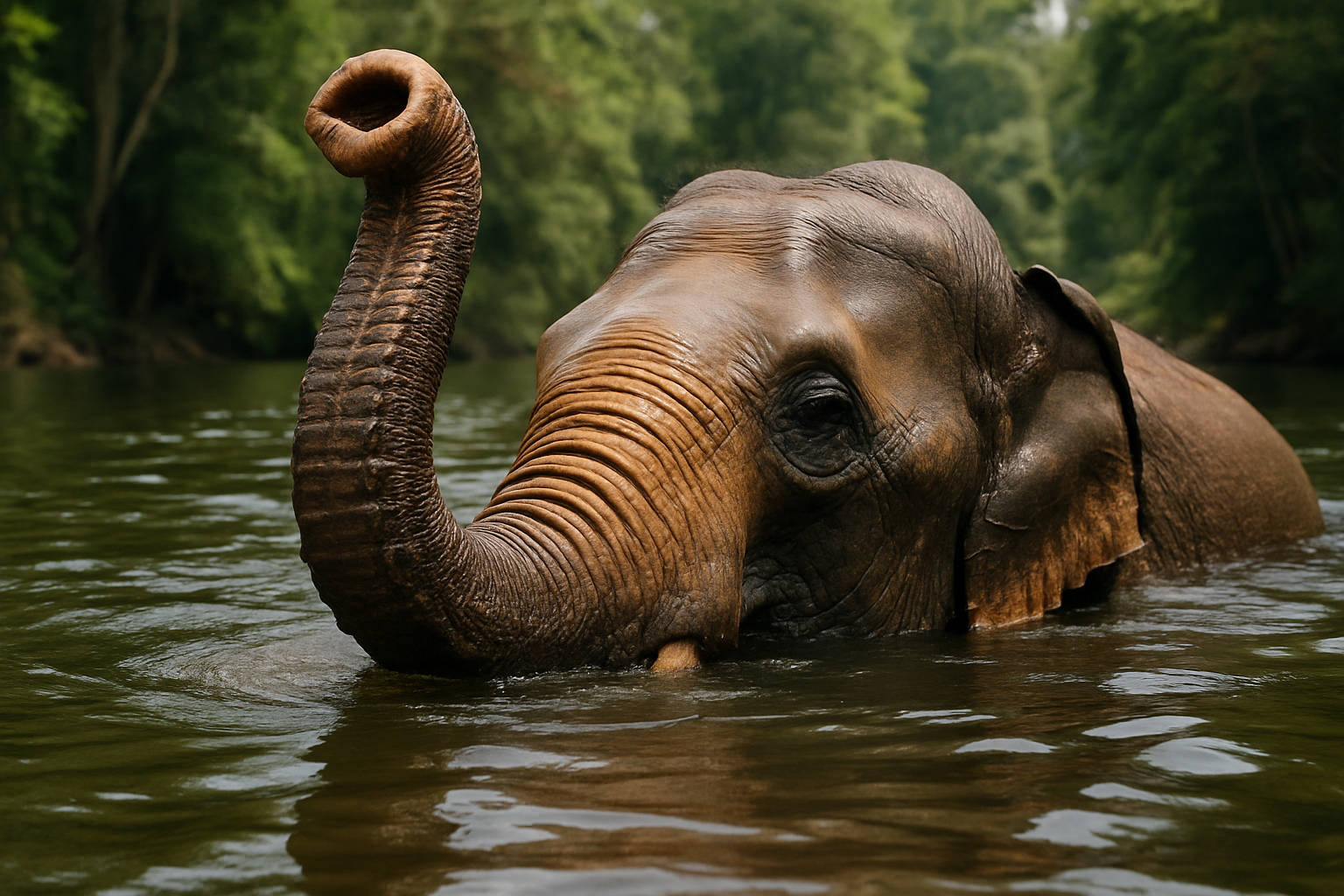Unraveling the Enigma of Elephant Snorkels
Elephants, known for their intelligence and social complexity, have long captivated researchers and animal enthusiasts alike. However, a lesser-known aspect of these majestic creatures has recently come to light: their ability to use their trunks as natural snorkels. This fascinating adaptation allows elephants to navigate deep waters and cross rivers with ease, showcasing yet another remarkable feature of these gentle giants.

The Evolution of Elephant Trunks
The elephant’s trunk, a marvel of nature, is the result of millions of years of evolution. This highly versatile appendage, formed from the fusion of the upper lip and nose, serves numerous functions beyond its role as a breathing apparatus. Initially evolving as a means to reach food and water, the trunk has become an essential tool for social interaction, environmental manipulation, and now, underwater respiration.
Fossil records indicate that the earliest elephant ancestors possessed much shorter snouts. Over time, selective pressures favored individuals with longer, more flexible noses, ultimately leading to the development of the modern elephant trunk. This evolutionary process not only enhanced the elephant’s foraging capabilities but also inadvertently created a natural snorkel, allowing these land-dwelling giants to adapt to semi-aquatic environments.
The Mechanics of Elephant Snorkels
The elephant’s trunk consists of over 40,000 muscles, making it incredibly strong and dexterous. When used as a snorkel, the trunk’s muscular structure allows for precise control over its shape and position. As an elephant submerges, it can elongate its trunk and hold it above the water’s surface, creating an air passage that connects to its respiratory system.
The trunk’s interior is lined with a complex network of nerve endings and sensory receptors, enabling the elephant to gauge water depth and current strength. This sensory feedback is crucial for maintaining the trunk’s position and ensuring a continuous supply of air. Additionally, the trunk’s tip can form a tight seal, preventing water from entering the air passage during submersion.
Behavioral Adaptations and Underwater Locomotion
Elephants employing their trunks as snorkels exhibit fascinating behavioral adaptations. When crossing deep waters, they often move in single file, with each elephant grasping the tail of the one in front with its trunk. This chain-like formation provides stability and guidance, especially for younger or less experienced individuals.
Underwater, elephants use their massive bodies and powerful legs to propel themselves forward. Their buoyant nature allows them to move with surprising grace beneath the surface. Some elephants have been observed using their trunks to feel the riverbed, detecting obstacles or assessing water depth. This combination of sensory awareness and physical adaptation makes elephants remarkably adept swimmers, capable of crossing wide rivers and even venturing into coastal waters.
Ecological Significance and Conservation Implications
The ability of elephants to use their trunks as snorkels has significant ecological implications. This adaptation allows them to access food sources and habitats that would otherwise be unreachable, expanding their range and influencing ecosystem dynamics. Elephants play a crucial role in seed dispersal, and their aquatic excursions may contribute to the spread of plant species across water barriers.
From a conservation perspective, understanding the elephant’s snorkeling behavior is vital for habitat protection and management. As human development encroaches on elephant territories, preserving aquatic corridors becomes increasingly important. Conservation efforts must consider the elephants’ need for safe river crossings and access to water bodies, ensuring that these essential pathways remain open and unobstructed.
Future Research and Technological Applications
The study of elephant snorkels opens up exciting avenues for future research and potential technological applications. Scientists are investigating the biomechanics of trunk snorkeling to develop more efficient underwater breathing apparatus for humans. The elephant’s ability to control its trunk with such precision could inspire innovations in robotics and flexible electronics.
Furthermore, ongoing research aims to better understand how climate change and habitat loss might affect elephants’ aquatic behaviors. As water sources become scarcer in some regions, the importance of preserving and protecting suitable river crossings and water access points for elephants becomes even more critical.
In conclusion, the elephant’s use of its trunk as a snorkel is a testament to the incredible adaptability of nature. This remarkable behavior not only showcases the elephant’s intelligence and physical prowess but also highlights the complex relationship between these animals and their environment. As we continue to unravel the mysteries of elephant snorkels, we gain valuable insights into the conservation needs of these magnificent creatures and the delicate ecosystems they inhabit.





